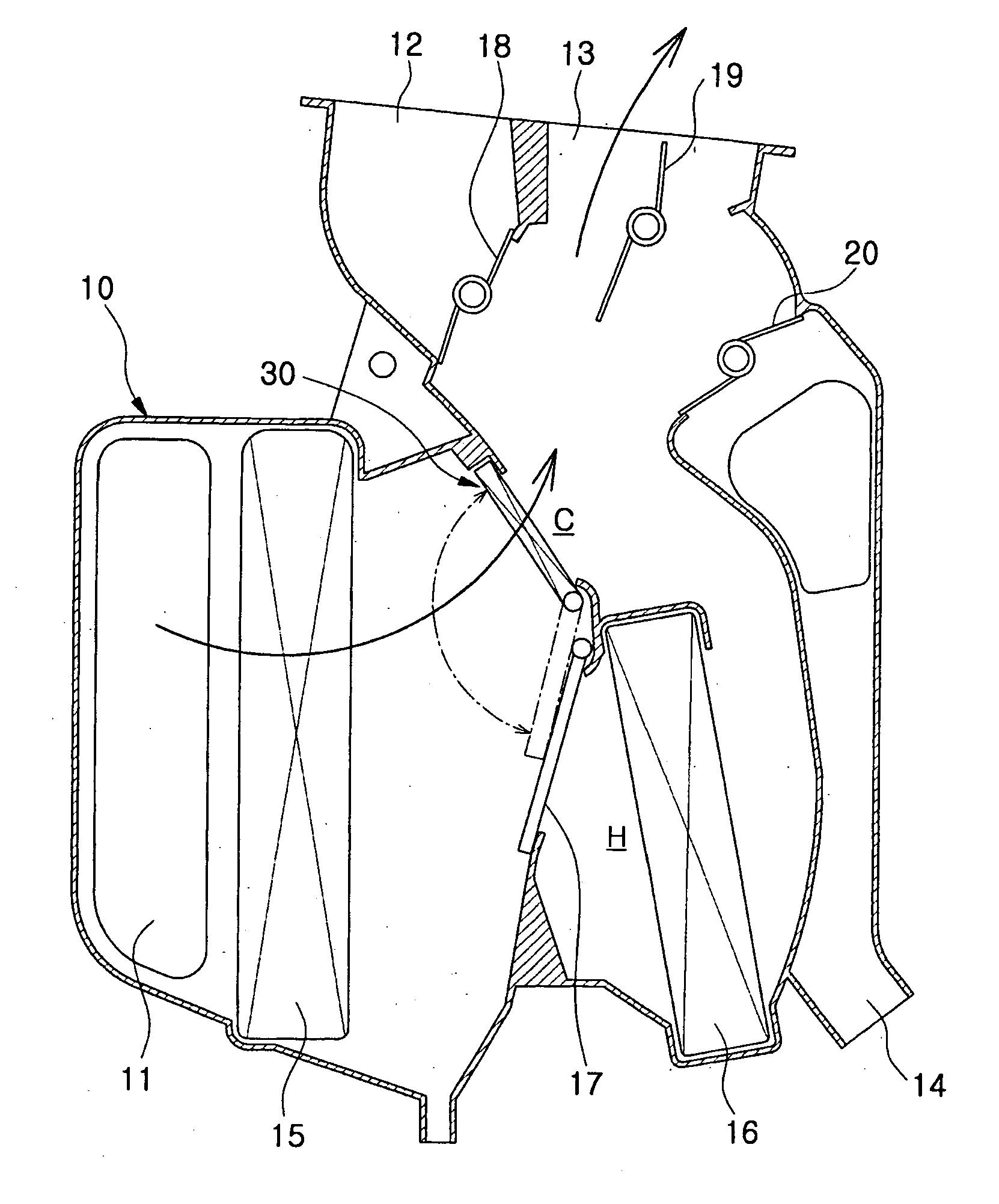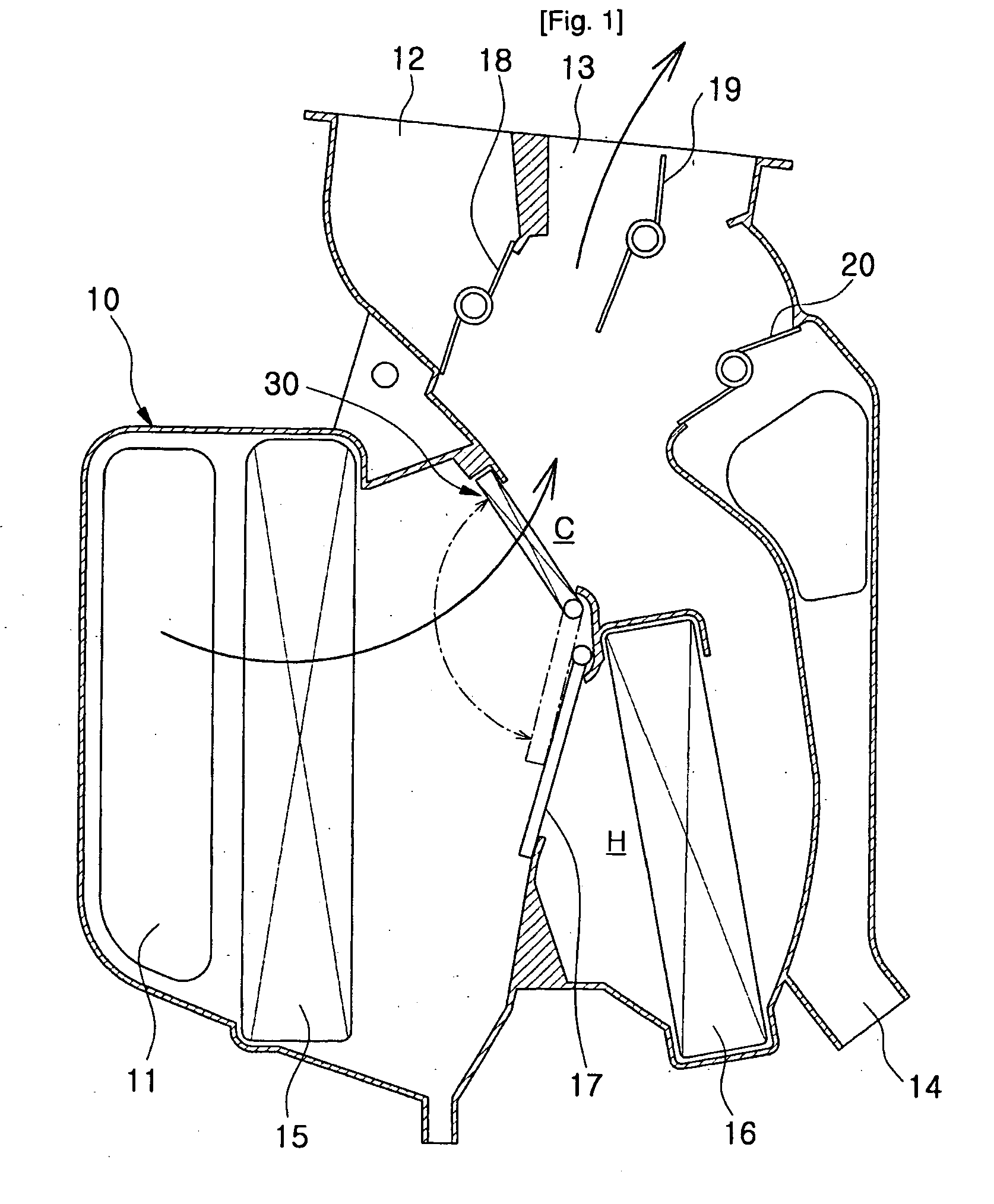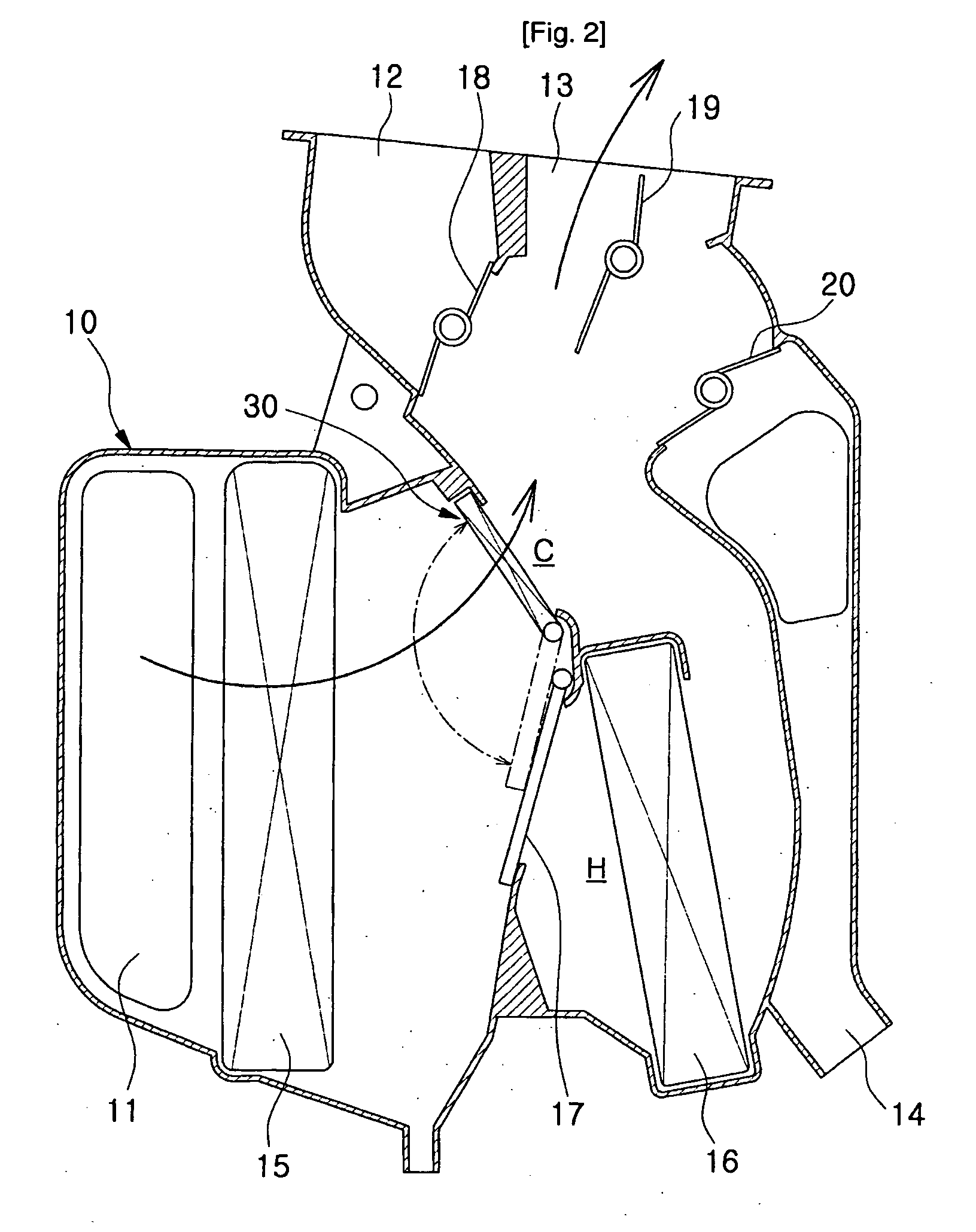Air Conditioning System for Car
- Summary
- Abstract
- Description
- Claims
- Application Information
AI Technical Summary
Benefits of technology
Problems solved by technology
Method used
Image
Examples
embodiment 1
[0044]FIG. 2 is a sectional view of an air conditioning system for a car according to a first preferred embodiment of the present invention, showing a state of a filtering mode during the maximum cooling mode, FIG. 3 is a configurative view of a temperature door of FIG. 2, FIG. 4 is a configurative view of a shiftable deodorization filter of FIG. 2, and FIG. 5 is a sectional view of an air conditioning system for a car according to a first preferred embodiment of the present invention, showing a state of a non-filtering mode during the maximum cooling mode.
[0045]An air conditioning system for a car according to this embodiment is a semi-center mounting type air conditioning system having an evaporator and a heater core, which are integrated with each other in a case.
[0046]That is, as shown in FIG. 2, the air conditioning system for the car includes an air conditioning case 10 having an air inlet 11 formed at an entrance part of a side thereof and a plurality of air outlets 12, 13 an...
embodiment 2
[0072]FIG. 7 is a sectional view of an air conditioning system for a car according to a second preferred embodiment of the present invention, showing a state of a filtering mode during the maximum cooling mode, FIG. 8 is a configurative view of a shiftable deodorization filter of FIG. 7, and FIG. 9 is a sectional view of an air conditioning system for a car according to the second preferred embodiment of the present invention, showing a state of a non-filtering mode during the maximum cooling mode.
[0073]The second preferred embodiment has the same configuration and function as the first preferred embodiment excepting that the shiftable deodorization filter of the second embodiment has a slidable structure. So, same components have same reference numerals in drawings, and repeated description will be omitted.
[0074]As shown in FIG. 8, shiftable deodorization filter 40 according to the second preferred embodiment includes: a filter case 41 having an inner space and being curved in an a...
embodiment 3
[0085]FIG. 11 is a sectional view of an air conditioning system for a car according to a third preferred embodiment of the present invention, showing a state of a filtering mode during the maximum cooling mode, and FIG. 12 is a configurative view of a temperature door of FIG. 11.
[0086]The third preferred embodiment has the same configuration and function as the first and second preferred embodiments excepting that the shiftable deodorization filter and the temperature door of the third embodiment have a structure that the shiftable deodorization filter and the temperature door described in the first and second embodiments are combined with each other. So, same components have same reference numerals in drawings, and repeated description will be omitted.
[0087]As shown in FIG. 11, the shiftable deodorization filter 30 according to this embodiment is mounted at a position different from that of the shiftable deodorization filter 30 of the first embodiment, but has the same hinge type s...
PUM
| Property | Measurement | Unit |
|---|---|---|
| Temperature | aaaaa | aaaaa |
| Time | aaaaa | aaaaa |
Abstract
Description
Claims
Application Information
 Login to View More
Login to View More - R&D
- Intellectual Property
- Life Sciences
- Materials
- Tech Scout
- Unparalleled Data Quality
- Higher Quality Content
- 60% Fewer Hallucinations
Browse by: Latest US Patents, China's latest patents, Technical Efficacy Thesaurus, Application Domain, Technology Topic, Popular Technical Reports.
© 2025 PatSnap. All rights reserved.Legal|Privacy policy|Modern Slavery Act Transparency Statement|Sitemap|About US| Contact US: help@patsnap.com



